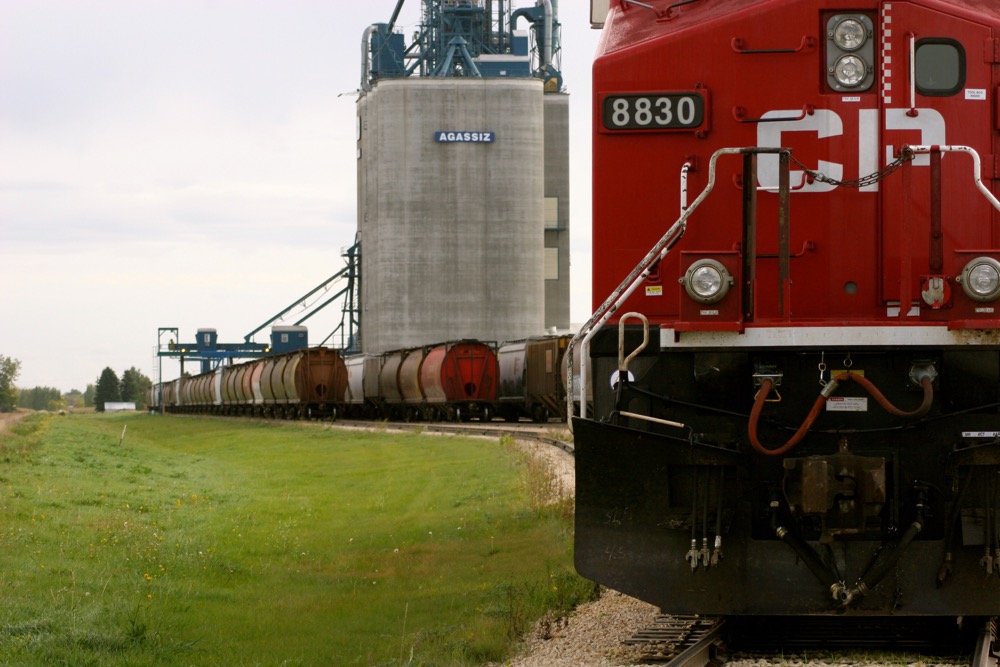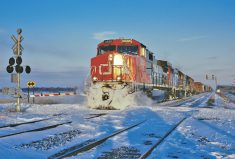The CPR says it’s ready to move a bumper crop, but agriculture industry observers remain somewhat skeptical.
CP CEO Hunter Harrison said, in a recent letter to Transport Minister Marc Garneau, the company is aware a big crop is on the horizon and is prepared for it.
“I think it is good news that CP is paying attention and is well-aware of a large crop expected,” Western Grain Elevator Association (WGEA) president Wade Sobkowich said in an interview last week. “The next step is what information they provide in terms of capacity in each of the corridors that we can expect.”
Read Also

Mazergroup’s Bob Mazer dies
Mazergroup’s Bob Mazer, who helped grow his family’s company into a string of farm equipment dealerships and the main dealer for New Holland machinery in Saskatchewan and Manitoba, died July 6 from cancer.
“Based on past practices I’m a little bit hesitant to celebrate anything just yet,” said Keystone Agricultural Producers president Dan Mazier.
“It took them two years to get rid of the (grain) backlog from 2013-14. I don’t know what has changed in the past two years.”
CP Rail is ready and willing to get Western Canada’s 2016 crop to market, president and CEO Hunter Harrison said in the June 28 letter.
“Operationally, CP is eager and prepared to move grain this coming crop year,” he wrote in the letter received by the Manitoba Co-operator and copied to Western Canadian transportation and agriculture ministers.
But if Prairie farmers harvest an above-average crop, as some experts predict, the whole sup- ply chain must co-operate rather than finger-point, Harrison wrote, alluding to past criticism that the railways weren’t well enough prepared to move the re- cord crop harvested in 2013. CP and CN Rail blamed it partly on an extremely cold winter.
“Not only is finger-pointing counter-productive, it unfairly tarnishes Canada’s reputation as a world-class supplier and it distracts us all from the most important task: moving grain to the benefit of Canadian producers and companies,” Harrison wrote.
Late last month the WGEA, which handles 90 per cent of the West’s grain, said farmers will harvest 68.6 million tonnes of grains. Production could be as low as 63.3 million or as much as 74.1 million, Sobkowich said. The low estimate would exceed the five year average of 61 million tonnes and the high would challenge the 2013 record of 76 million tonnes.
CP has seen the estimates and has made record investments in improving its system the letter states.
“We have constructed 22 new and extended sidings on our North Line between Edmonton and Winnipeg, four new extended sidings on the Western corridor through B.C., and nine new sidings through the Upper Plains states to Chicago,” Harrison wrote.
“These capacity-enhancing infrastructure investments allow us to move more commodities — including more grain — in an efficient and safe manner. This will improve our service and reliability and it will accelerate our growth in lock-step with our customers.”
Canada’s grain sector has increasingly relied on exports through Vancouver, which has finite capacity, Harrison wrote.
To move more grain, Thunder Bay — which closes in early winter — must remain open longer, he added.
If the forecast for a crop possibly just four or five million tonnes below the 2013 record is correct, the grain sector should do all it can to reduce carryover grain stocks, Harrison wrote.
“The grain supply chain in Canada, like all efficient supply chains, is not built to move total annual volumes of a commodity in a short, peak period of time and then sit idle for the rest of the year.”
CP will operate 24/7, 364 days a year, Harrison wrote. “Operationally, CP is eager and prepared to move grain this coming crop year,” he wrote. “As we continue to execute our Scheduled Precision Railroad model, our network has never been in better shape to perform.
“CP’s network train speed this current quarter (Q2 2016) is 30 per cent faster than the same period in 2013 (just before the record 2013-14 crop).”
The company’s Dedicated Train Program program has made grain movement more efficient, he added.
CP has been moving more grain lately, but earlier this crop year it was only filling 35 per cent of grain company orders, Mazier said, citing data collected by the Ag Transport Coalition, which includes WGEA members.
Mazier also said he was uneasy because CP recently laid off 500 maintenance workers.
Grain companies are uneasy too and wonder if CP has enough cars and locomotives, Sobkowich said. But if the rail- ways were penalized for failing to meet shipper service requirements, shippers wouldn’t feel the need to poke their noses in rail operations, he added.
Likewise the railways shouldn’t be telling grain companies which export terminals to use or when they should be shipping, Sobkowich said.
“We will use our facilities to the extent that it makes economic sense and it gives us the best return for the grain indus- try,” he said. “That’s not for the railways to dictate. That is for us to decide.”
Harrison wrote that CP has thousands of hopper cars and hundreds of locomotives parked.
“It would be unfortunate if a significant amount of supply chain capacity is lost due to customers wanting to wait for a specific price to sell their grain, as we experienced in the summer and early fall of 2013,” he wrote, but adding it’s up shippers.
Harrison concluded the later by stating if forecasts for historically large volumes of grain this fall become reality, the Canadian should move as much grain as possible to reduce carry-in to the next crop year, which will reduce the total volume necessary to move during the peak period.




















